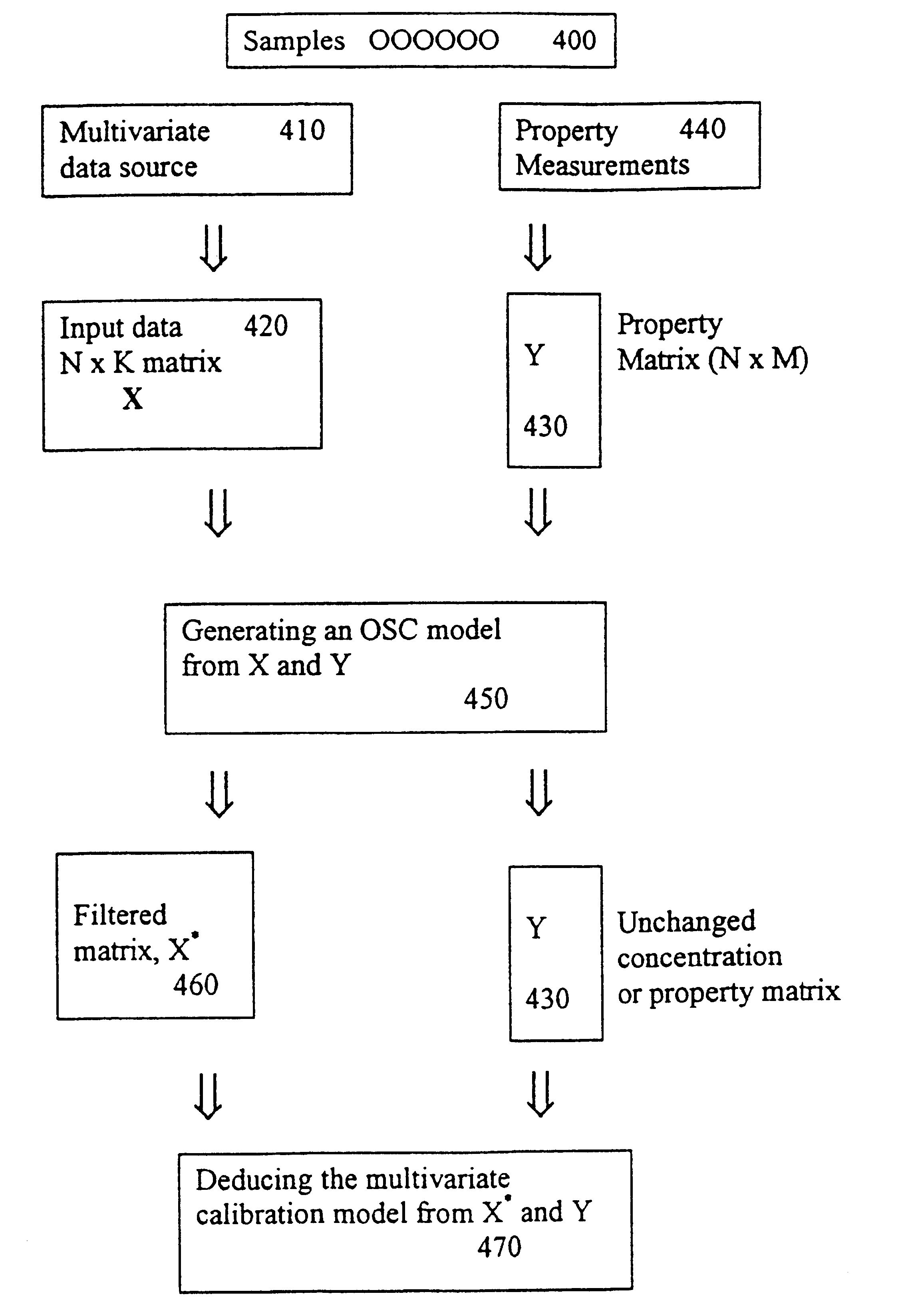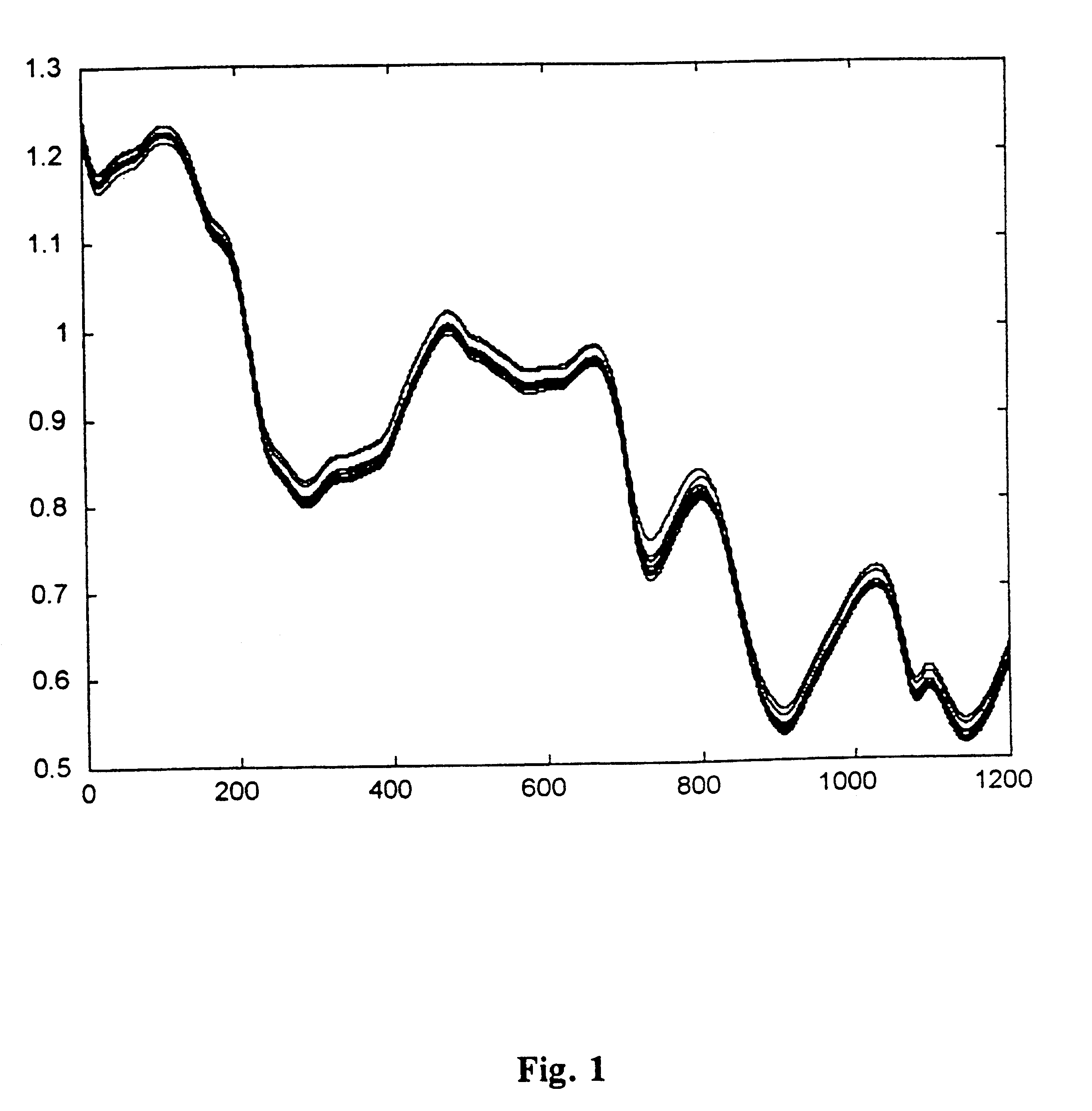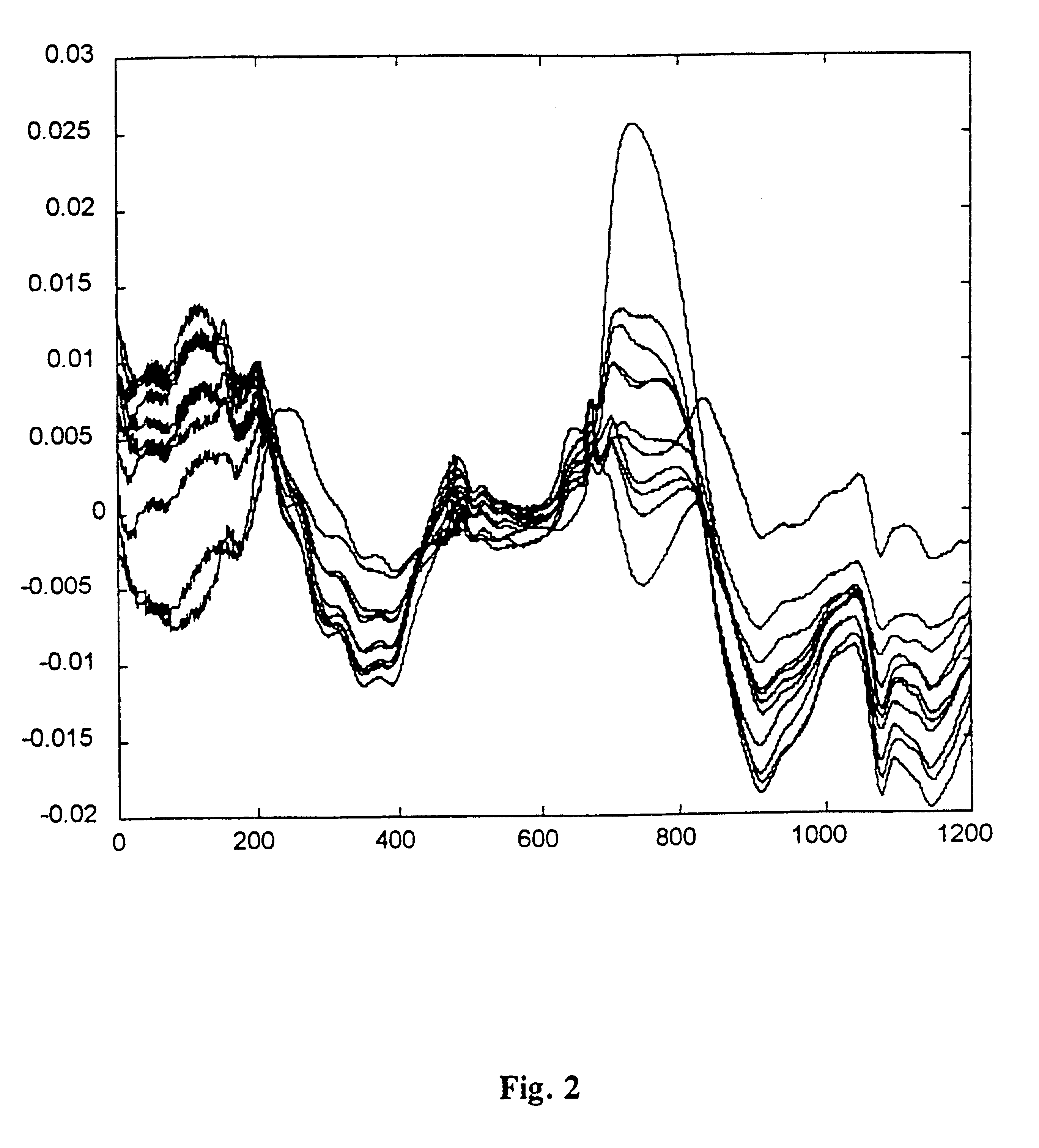Method and arrangement for calibration of input data
a technology for input data and calibration methods, applied in the field of method and arrangement for calibration of input data, can solve the problems of difficult to construct general filters that actually improve the properties of data, difficult to specify, and inability to accurately predict new samples. to achieve the effect of better determined properties
- Summary
- Abstract
- Description
- Claims
- Application Information
AI Technical Summary
Benefits of technology
Problems solved by technology
Method used
Image
Examples
Embodiment Construction
The present invention is henceforth described as using input data from near-infrared or infrared spectroscopy, but it should be appreciated that it is possible to enter input data from almost any technical field as long as the objectives set forth through the invention are fulfilled. Hence, the method according to the present invention is not limited to spectroscopic inpuLt data. Other possible technical fields presenting input data are e.g. relating to predictions, forecasts etc. Also, the term property used in the present invention shall be given a broad interpretation comprising such properties of solid, semi-solid, fluid, vapour, samples etc, as, concentration, density, elasticity, viscosity, strength, thickness, class belonging (e.g. octane number for petrol classification) etc and predictions from probability input (e.g. stock market information) or other input figures for prediction from any technical field etc.
As an illustration, a modeling of the viscosity of three sets of ...
PUM
| Property | Measurement | Unit |
|---|---|---|
| concentration | aaaaa | aaaaa |
| weights | aaaaa | aaaaa |
| NIR) spectroscopy | aaaaa | aaaaa |
Abstract
Description
Claims
Application Information
 Login to View More
Login to View More - R&D
- Intellectual Property
- Life Sciences
- Materials
- Tech Scout
- Unparalleled Data Quality
- Higher Quality Content
- 60% Fewer Hallucinations
Browse by: Latest US Patents, China's latest patents, Technical Efficacy Thesaurus, Application Domain, Technology Topic, Popular Technical Reports.
© 2025 PatSnap. All rights reserved.Legal|Privacy policy|Modern Slavery Act Transparency Statement|Sitemap|About US| Contact US: help@patsnap.com



